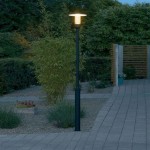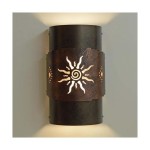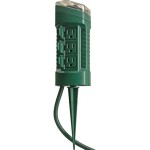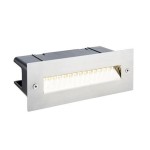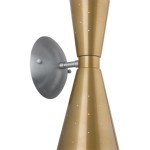How to Keep Bugs Out of Your Outdoor Light Fixtures
Outdoor light fixtures, while providing essential illumination for safety and aesthetics, often become unwelcome havens for insects. Attracted by the light source, bugs can accumulate inside the fixture, creating an unsightly mess and potentially affecting the fixture's performance. This article explores effective strategies to minimize insect intrusion into outdoor lighting, covering prevention, deterrents, and maintenance techniques.
Understanding Why Bugs Are Attracted to Outdoor Lights
Several factors contribute to insects' attraction to outdoor lights. The most significant is positive phototaxis, a natural behavior where many insects are drawn to light sources. This attraction stems from their evolutionary reliance on celestial light for navigation, which they often misinterpret artificial light as. The specific type of light emitted by a fixture also plays a role. Traditional incandescent and fluorescent lights produce a broader spectrum of light, including ultraviolet (UV) wavelengths, which are particularly attractive to insects. Heat generated by these bulbs further enhances their appeal.
Beyond the lure of the light itself, outdoor fixtures can offer shelter and a conducive environment for insects. The enclosed space provides protection from wind, rain, and predators. Additionally, the warmth radiating from the bulb can create a suitable microclimate, especially during cooler evenings.
Implementing Preventative Measures
The most effective approach to managing bugs in outdoor light fixtures involves proactive prevention. This begins with careful selection of lighting fixtures and bulbs, followed by proper installation and regular maintenance. Choosing the right type of light fixture can significantly reduce insect attraction.
Sealed fixtures offer a physical barrier against insect entry. These fixtures are designed with tight seals around the bulb and housing, preventing bugs from accessing the interior space. When selecting sealed fixtures, verify that the seals are robust and resistant to weather damage. Look for fixtures with gaskets made from durable materials like silicone or rubber.
Another approach to prevention rests in choosing the right light bulbs. Light-emitting diode (LED) bulbs offer several advantages over traditional incandescent and fluorescent options. LEDs produce significantly less heat, which reduces their attractiveness to insects. Furthermore, LEDs emit a narrower spectrum of light, minimizing the UV wavelengths that are particularly enticing to bugs. In addition, LEDs are energy efficient and have longer lifespans, resulting in lower maintenance requirements.
Proper fixture installation is crucial for maintaining a bug-free environment. Ensure that all connections are tight and that any openings or gaps are sealed with caulk or weather stripping. Pay particular attention to areas where the fixture mounts to the wall or ceiling, as these are common entry points for insects. Inspect the seals regularly and reapply caulk as needed to maintain their integrity.
Reducing overall ambient lighting can also help to minimize insect attraction. Consider using lower wattage bulbs or motion-sensor lights that only activate when needed. This reduces the amount of time that the lights are on, limiting the opportunity for insects to gather around the fixtures.
Utilizing Insect Deterrents
Even with preventative measures in place, some insects may still be drawn to outdoor light fixtures. In these cases, employing insect deterrents can further reduce their presence. Several options are available, ranging from natural remedies to commercially available insecticides, with each offering different levels of effectiveness and safety considerations.
Citronella candles and torches are a popular choice for outdoor insect control. Citronella is a natural insect repellent derived from citronella grass. The smoke and aroma released from burning citronella candles or torches can help to deter mosquitoes and other flying insects. Position the candles or torches near the light fixtures to create a barrier of repellent.
Bug zappers are another common method for controlling flying insects. These devices use an electric grid to attract and electrocute insects that come into contact with it. While bug zappers can be effective at killing insects, they also attract a wide range of non-target species, including beneficial insects. Furthermore, the noise generated by bug zappers can be disruptive to some people. As such, consider the potential environmental and noise impacts before using bug zappers.
Insecticides can be used to treat the area around outdoor light fixtures. However, it is important to use insecticides judiciously and according to the manufacturer's instructions. Choose insecticides that are specifically formulated for outdoor use and that are effective against the target pests. Avoid spraying insecticides directly onto the light fixtures, as this can damage the finish and potentially create a fire hazard. Instead, focus on treating the surrounding areas, such as walls, ceilings, and foliage.
Natural insect repellents offer a more eco-friendly alternative to chemical insecticides. Many plants, such as lavender, rosemary, and mint, have natural insect-repelling properties. Planting these herbs near outdoor light fixtures can help to deter insects without the use of harmful chemicals. Essential oils derived from these plants can also be diluted with water and sprayed around the fixtures.
Maintaining Your Outdoor Light Fixtures
Regular maintenance is essential for keeping outdoor light fixtures free of bugs and functioning properly. This includes cleaning the fixtures, inspecting the seals, and replacing bulbs as needed. Neglecting maintenance can lead to insect infestations, reduced light output, and premature fixture failure.
Cleaning outdoor light fixtures regularly helps to remove accumulated dirt, debris, and insect carcasses. Use a soft cloth or brush to wipe down the exterior of the fixture. For stubborn dirt or grime, use a mild detergent and water solution. Avoid using harsh chemicals or abrasive cleaners, as these can damage the finish. Ensure that the fixture is completely dry before reinstalling the bulb or turning on the power.
Inspecting the seals and gaskets around the fixture is crucial for preventing insect entry. Check for cracks, tears, or other signs of damage. Replace any damaged seals or gaskets to maintain a tight barrier against insects. Reapply caulk around the fixture as needed to fill any gaps or openings.
Replacing bulbs promptly is important for maintaining optimal light output and preventing insect infestations. Burned-out bulbs can attract insects, as they may be seen as a source of shelter or nesting material. Furthermore, a flickering or dim bulb can be more attractive to insects than a bright, steady light. When replacing bulbs, choose bulbs that are specifically designed for outdoor use and that are compatible with the fixture.
Periodically inspect the wiring and connections of the outdoor light fixtures. Loose or damaged wiring can create a safety hazard and attract insects. Ensure that all connections are tight and that the wiring is properly insulated. If you notice any signs of damage, such as frayed wires or exposed conductors, consult a qualified electrician for repair.
By implementing these strategies, property owners can significantly reduce the presence of insects in outdoor light fixtures, creating a more comfortable and aesthetically pleasing outdoor environment, while ensuring the longevity and efficient operation of their lighting systems.

I M A Home Expert Keep Bugs Away From Outdoor Lights This Summer With One Easy Switch The Us Sun

Can Light Covers 8 Pack Keep Bugs And Pests Out Of Your Recessed Lights Outdoor Lighting Decorative Design Com

I M A Home Expert Keep Bugs Away From Outdoor Lights This Summer With One Easy Switch The Us Sun

How To Keep Bugs Away From A Porch Light 11 Steps With Pictures

How To Keep Bugs Away From A Porch Light 11 Steps With Pictures

These Led String Lights Will Keep Mosquitos Away

Para Keeps Bugs Out Of Porch Light Smragan Com

How To Keep Bugs Away From A Porch Light 11 Steps With Pictures

What To Do If Your Porch Light Attracts Bugs Bpm Electric

Do Led Lights Keep Bugs Away Light Colors To Reduce Insects
Related Posts
